Is this the end for CO2 laser cutting?
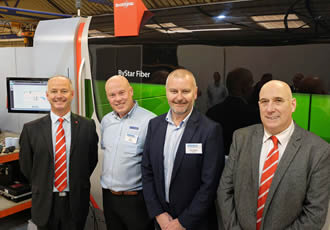
After the launch of 10kW fibre laser cutting technology at EuroBlech back in October, from Bystronic, Jon Till believes the last possible reason to by a CO2 laser cutting machine, namely to process thicker materials economically, has been removed. Till, joint owner together with technical director Steve Morgan of Accurate Laser Cutting, Oldbury, has recently become a fibre-only subcontractor.
Till has used laser cutting machines since 1999, when the company he was involved with bought a Bystronic BySprint 3 kW CO2 model, swiftly followed by 4kW and 4.4kW versions and then the first 6kW machine in 2002.
It was back in June 2015 that the introduction of fibre laser cutting with the installation of a 6kW BySprint Fiber with 4x2m capacity at Accurate Laser Cutting came around. A 10kW ByStar Fiber for processing sheet up to 3x1.5m has just been added, in November 2016, the first machine of such high power to be installed in the UK.
Based on his long experience, Till provides a user’s view of the advantages of fibre over CO2 laser cutting in terms of increased machine availability and productivity, lower running costs and greater versatility; and argues that the demise of CO2is nigh.
The first point he makes is that 6kW is the practical limit for CO2 laser cutting, as higher power would burn the optics. Even power sources below this limit take their toll on the lenses and mirrors in a machine, leading to frequent downtime to clean them, expensive periodic replacement and production downtime while all this is carried out. Clearly it is financially detrimental for a manufacturer if a machine tool costing hundreds of thousands of pounds stands idle for extended periods.
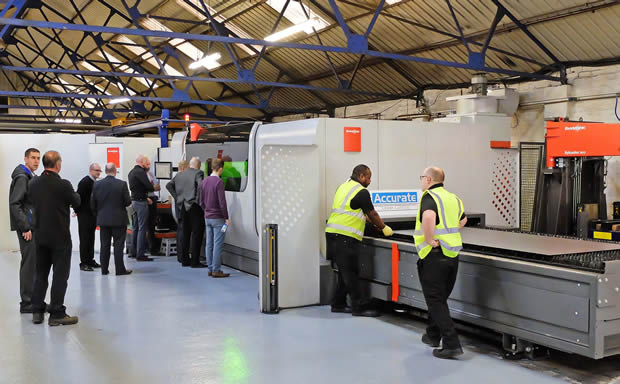
CO2 laser machines are difficult to maintain, not only due to the condition of the optics but also the tendency of the optical path to move out of alignment, necessitating time-consuming correction if quality is to be maintained. At the best of times, especially on larger machines with a 4x2m bed and above, accuracy in one corner of a sheet is very hard to replicate at the diametrically opposite corner, entailing lengthy operator intervention to try to correct the discrepancy.
Till bemoans the fact that one can spend hours identifying a problem with a CO2 laser cutting machine when quality or speed of cut declines. First recourse is to tweak the parameters at the control, followed by taking off the head and cleaning the lens, and perhaps swapping the lens at a cost of £270 each time, typically eight times per month, if it is not maintainable by the operator. Mirror alignment is then scrutinised and adjusted if necessary.
Finally, if none of that works, it may be that the purity of the assist gas is too low, which is detrimental to beam quality. This is very difficult to predict and is the last thing that is checked, yet nevertheless will typically happen twice per year.
Fibre laser cutting, on the other hand, avoids all of these problems. The solid state technology directs the beam down a fibre optic cable, so there is no wear and tear on conventional optics and the laser beam does not degrade. Machine running costs are significantly lower, as electricity consumption is 60% less for a fibre machine, and there is no need to use expensive nitrogen, helium and carbon dioxide as laser assist gases.
Productivity is dramatically increased using fibre. Till commented: “Our new 10kW ByStar Fiber cuts 1mm mild steel at 60m/min, faster than our old CO2 laser was able to position its head (50m/min) to start cutting. The speed and hence productivity advantage when processing thinner sheet is around three times, reducing for thicker materials.
“Clean cutting is also much quicker, where nitrogen rather than oxygen is used as the cutting gas to prevent oxidation of the cut edge. When processing 5mm mild steel, for example, the fibre machine is four times the speed of our last CO2 machine.”
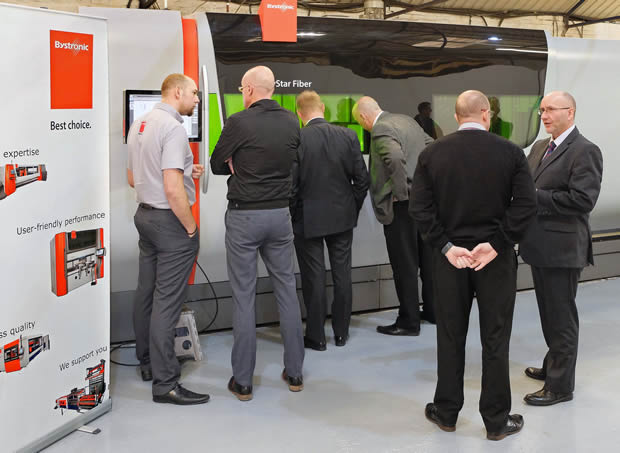
On the subject of the relative productivity of the two machine types, he suggested that one would be reluctant to leave a CO2machine running unattended overnight; such is its tendency to drift out of tolerance, whereas he would have no hesitation running a ghost shift with the fibre laser. He notes that the technology has de-skilled operation to the point where on a fibre machine one simply presses a button and the machine starts producing, whereas there is still a lot of black art in operating a CO2 machine.
Cutting capacities of the 10kW Fiber laser source (and the 6kW ByLaser CO2 source in brackets) are 25mm (25mm) in mild steel, 30mm (25mm) in stainless steel and 30mm (16mm) in aluminium, so CO2 technology has already been overtaken. A fibre laser copes with cutting reflective materials much better than CO2, hence the superior performance in aluminium. For the same reason, the 10kW Fiber can cut 15mm brass and 12mm copper, materials that CO2 cannot process at all without the risk of back reflections damaging the optics.
Mr Till’s final analysis brings in the costs of the two machines: typically £750,000 for a 10kW fibre laser cutting centre and £500,000 for a 6kW CO2 machine. In his opinion, the higher capital investment in fibre laser cutting is easily outweighed by the extra expense of running a CO2 machine and the latter’s very low residual value towards the end of its life.
He concluded: “A fibre laser can cut everything that a CO2laser can process and very much faster in the case of thinner gauges. It is also able to tackle a much wider variety of materials – perfect for a subcontracting environment.
“It achieves accurate and repeatable results economically with very little machine downtime, raising production output day and night. In my view, this latest 10kW machine is a game changer in laser cutting machines.”
Similar articles
More from Bystronic UK Limited
- Keeping up with a ten kilowatt fibre laser 19th November 2018
- Appointment made as company looks to the future 13th September 2018
- Loading system developed for fibre laser cutting machines 19th February 2018
- Mobile press brake offers high bending capacity 8th September 2017

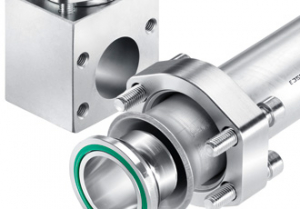
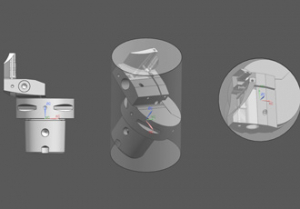
ed.jpg)
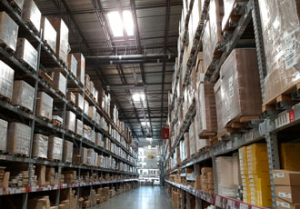







Write a comment
No comments